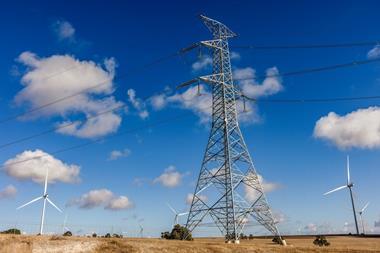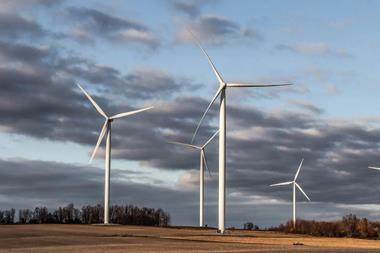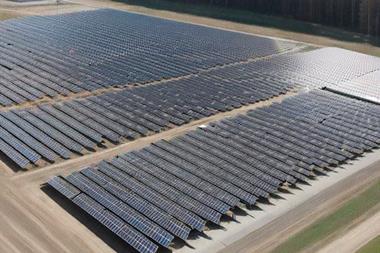“Firming” and “Matching” are two new buzzwords in battery energy storage. But do they have the potential to turbo-charge battery energy storage installation and help solve today’s energy crisis faster, with less disruption to the grid? Andrew Waranch explains
Over the last five years, select catalysts have helped to drive massive growth in the deployment of battery energy storage systems across the US, including: the passing of the Inflation Reduction Act (IRA) and related transferable Investment Tax Credits (ITCs); declining equipment costs, inflows of low cost ESG-driven debt, and equity capital; and increased revenue opportunities for Independent System Operators (ISOs).
However, the following will perpetuate greater short-term uncertainty in real-time energy prices: changing load patterns; booming data centre load growth related to AI; an increasing shift to electric vehicles; and the phase-out of coal fired generation plants as more solar and wind generation facilities come online.

Battery energy storage stands to benefit from such price volatility while providing grid-protecting ancillary services and lowering carbon emissions.
We founded Spearmint Energy on that exact belief: that even though the energy transition will be volatile, deploying battery energy storage will help alleviate grid instability, increase system resiliency, lower emissions, and reduce overall system costs.
Further, we believe that standalone battery energy storage, either operated with merchant exposure or contracted revenues, provides an exciting, attractive, and differentiating investment opportunity to firm up the grid and match its growing demand for clean energy. We believe this opportunity will gain even more momentum as volatility persists.
The state of volatility today
The most volatile periods of the day are generally the morning and evening “ramps” at sunrise and sunset when the rate of change of demand is greater than the rate of change of the available supply of generation.
In the hours leading up to sunrise, demand grows rapidly, but wind generation declines and solar has yet to provide enough megawatts to match increasing demand.
At sundown, solar generation drops off, while peak demand for electricity remains high and wind generation has yet to pick up. For the last 30 years, the grid has covered these volatile, high-price periods using inefficient, quick-start and carbon-intensive gas or oil-fired peakers.
Firming: The need to proactively protect the grid
In Texas and California, where renewable generation is highest, and in other ISOs where overwhelmed interconnection queues are bracing for new additions, political forces are taking more protectionist measures to address the risks of short-term grid volatility.
Some have proposed requiring the pairing of intermittent generation resources with short-term battery energy storage facilities to get ahead of any looming problem before it comes to fruition.
These measures, while not taken lightly, further reflect the grid’s critical need for greater storage. Recent research from Ascend Analytics indicates that one unit of battery energy storage will be required for every three units of renewable generation assets installed to protect the grid from under/over generation and reduce the price impact of unpredictable generation.
Given that the US currently has over 240GW of installed solar and wind generation assets, it can be deduced from this research that a minimum of 60GW of battery energy storage will be required to firm up the nation’s existing resource base – and that excludes the additional storage that would be needed to firm up the more than 1,000GW of wind and solar projects currently under development nationwide.
Either way, we have a long way to go. As of 2022, according to the US Energy Information Administration, the US had less than 12GW of storage installed.
There has indeed been a massive recent increase in battery energy storage deployment, with 10GW of utility-scale batteries installed over the last three years alone.
However, grid instability is getting worse faster than it is getting better – proving that even more near-term battery energy storage development is required to ensure grid resiliency.
Matching: Hour by hour
As noted above, all jurisdictions suffer from a significant problem: they have too much wind power overnight and too much solar during the afternoon, but woefully insufficient generation during the morning and evening ramps. Worse still, they have no “green” solution for the crucial ancillary services needed to protect the system when it is most vulnerable.
We see battery energy storage as the natural solution to smooth the volatility of these ramps. While one could argue that the total sum of generation is more than sufficient over a calendar day, newer legal requirements of hourly “Matching” (ensuring that each hour claimed as renewable energy is equivalent to an hour of actually-used renewable generation) will undoubtably require battery energy storage to smooth the flow over a 24-hour period.
We believe untapped opportunities for storage will continue to emerge as mission-critical energy consumers, such as “green” corporate data centers, begin to recognise the need for “Matching” to not only hedge their existing financially contracted renewables exposure and solve the lack of energy across the volatile ramps, but also satisfy the demands of their users and investors for sustainability- sourced and compliant power.
One way that storage could directly benefit is through the potential implementation of specific, granular Hourly Renewable Energy Certificates (HRECs) as opposed to more “general” or “vanilla” Renewable Energy Credits.
Claiming a credit for a night-generated wind or noon-time solar megawatt, when marginal carbon emissions are low, is clearly less valuable than claiming a credit during the morning or evening peak, when average carbon emissions are much higher.
Implementing a more specialised HREC credit system could provide one possible “Matching” solution, aligning power demand with lower carbon generation.
Hydrogen: It’s not just about wind and solar
The upside potential for battery energy storage is not limited to its use with wind and solar assets. While the need for battery energy storage to support wind and solar generation is well-known and widely discussed, very little attention has been paid to the newer use of energy storage for green hydrogen, another burgeoning segment of the energy transition poised to benefit tremendously from the increasing deployment of battery energy storage.
Bolstered by greater-than-expected subsidies of $3 per kilogram of ITCs under the IRA and a global shift in investor sentiment, we now see oil majors, large private equity investors, and multinational utilities rushing to adapt newly planned or installed wind generation facilities for hydrogen production.
In fact, we at Spearmint believe that green hydrogen is potentially the largest unmodeled storage resource required across the U.S. grid and will lead to intense competition between the traditional electrical grid and the new hydrogen economy.
The solution: storage
We expect the risks faced by solar and wind owners, green hydrogen producers, and high energy consumers will only increase in the face of persistent grid volatility, leaving them no choice but to utilise batteries. This, in turn, will enhance the demand for standalone battery energy storage.
We founded Spearmint with the conviction that standalone battery energy storage provides an opportunity for asset owners to earn attractive risk-adjusted returns while mitigating carbon emissions, increasing grid resiliency, and reducing the volatility inherent to the increased use of intermittent generation assets throughout the energy transition.
The need for “Firming” and “Matching” only increases the demand for storage to create HRECs as volatility persists in the years to come.


















